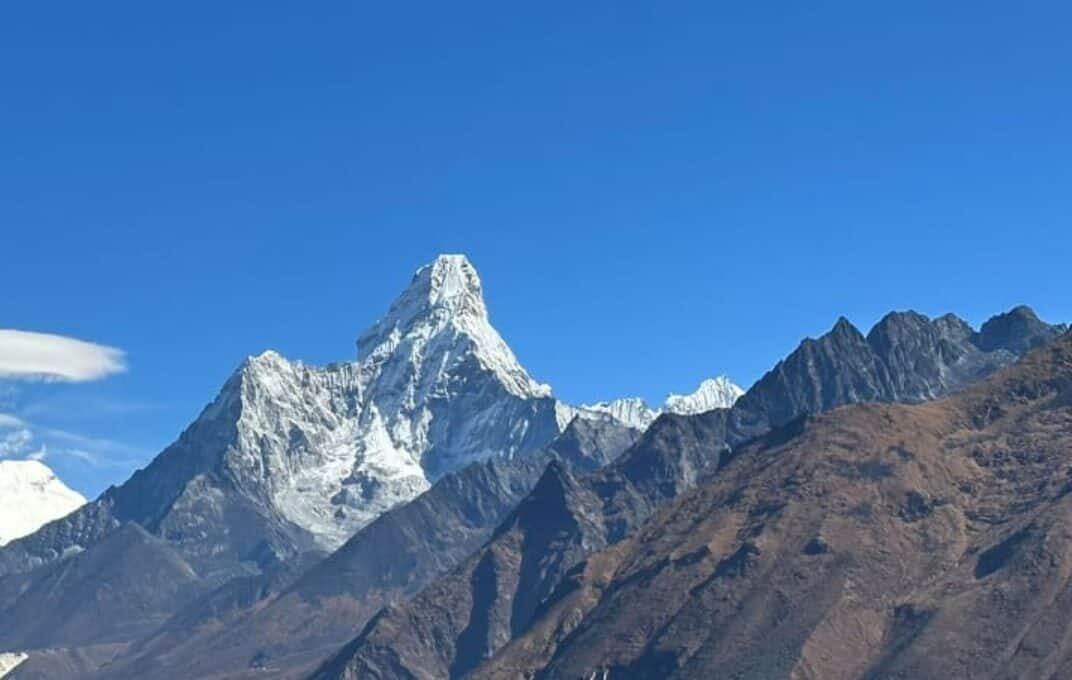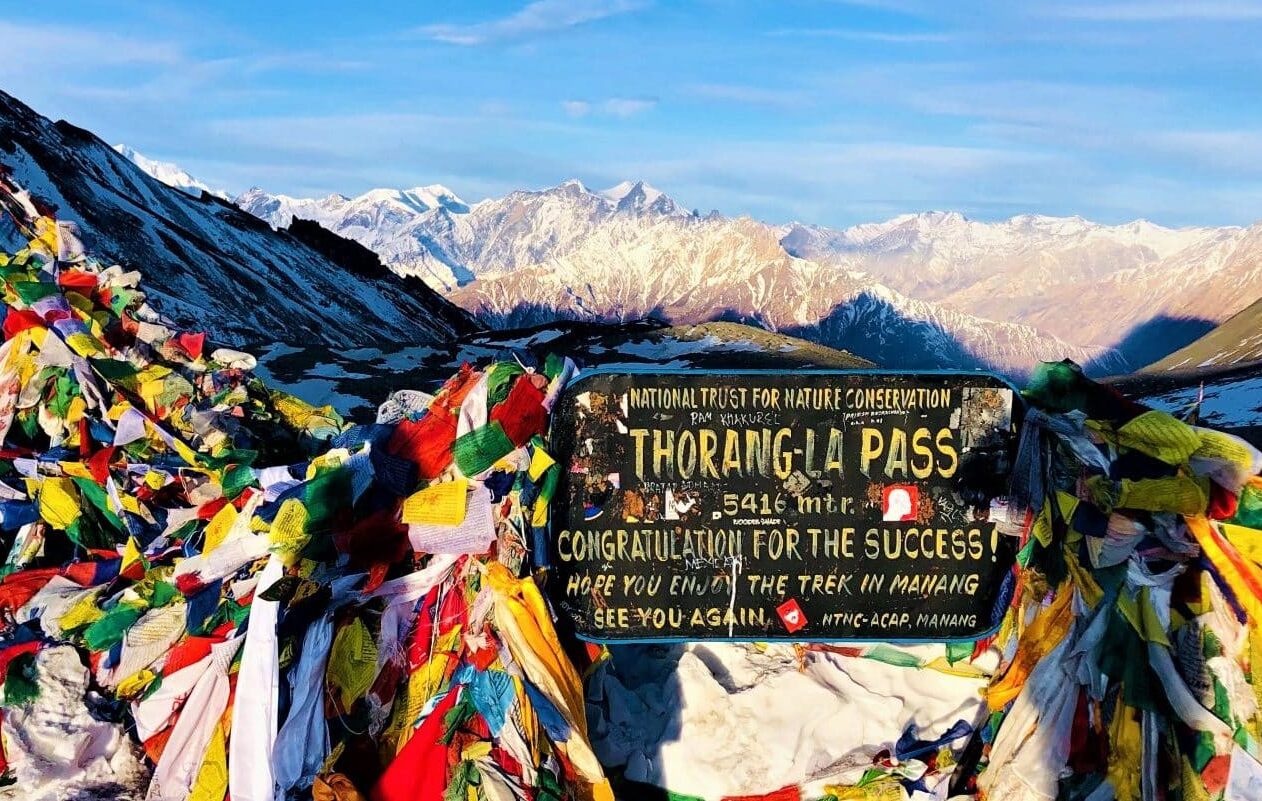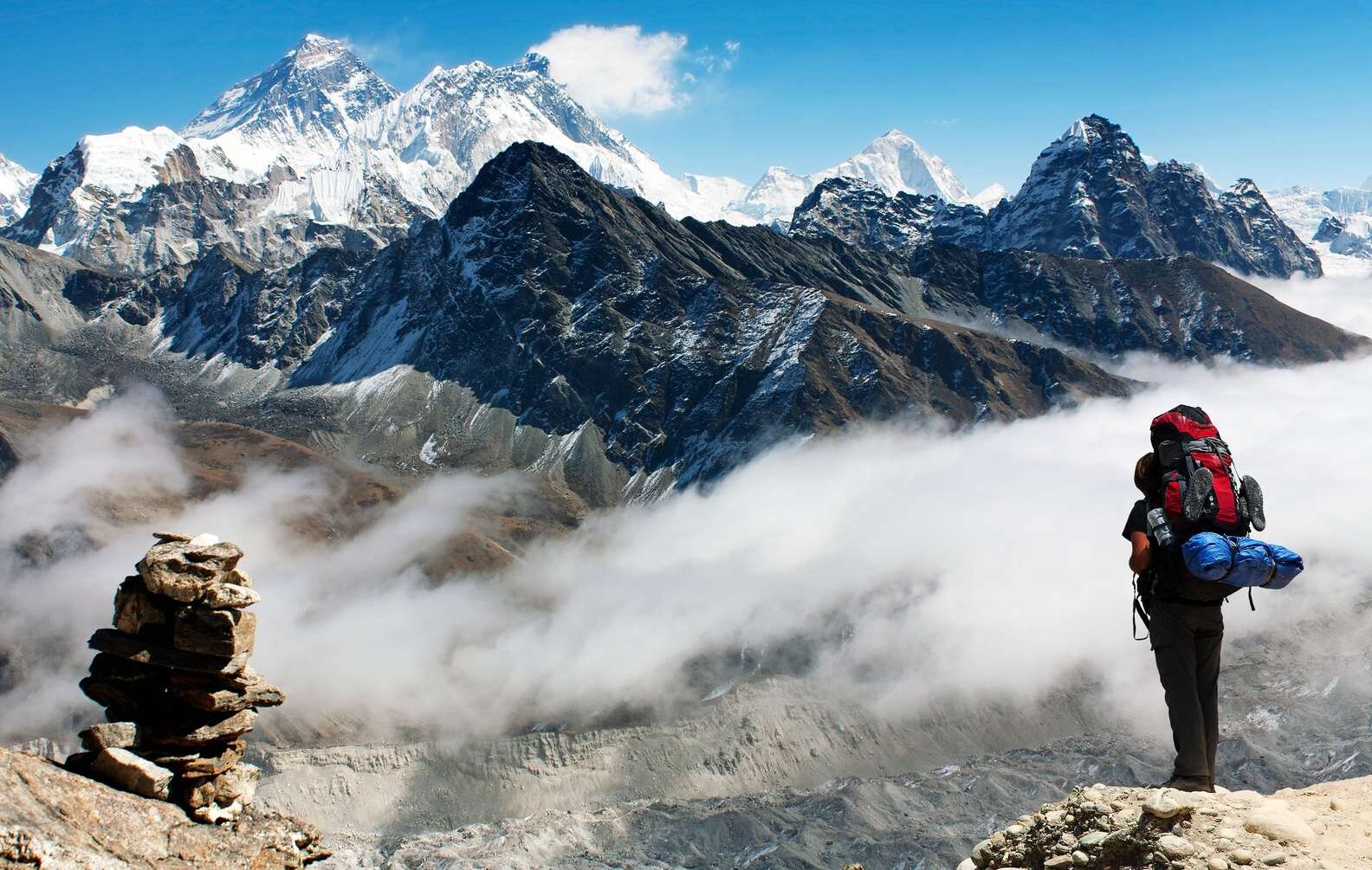The Langtang Valley Trek offers an unparalleled trekking experience in Nepal’s stunning Himalayas. With breathtaking landscapes, rich cultural experiences, and challenging yet rewarding trails, it’s a must-do for adventure seekers. However, planning for this trek involves more than just packing your bags; understanding the costs is crucial. This blog will provide a detailed breakdown of the costs associated with the Langtang Valley Trek, helping you prepare for an unforgettable journey.
Introduction to Langtang Valley Trek
The Langtang Valley Trek is one of Nepal’s most popular trekking routes, offering stunning views of the Langtang range and a close encounter with the Tamang culture. When planning your trek, it’s essential to consider all the costs involved, from permits and accommodation to food and transportation. The Himalayan Treks offers a comprehensive Langtang Valley Trek package that covers most of these expenses, making it easier for you to focus on enjoying the trek.
Trekking Permits and Fees: A Necessary Investment
Before embarking on the Langtang Valley Trek, you must obtain the necessary permits. These permits ensure the conservation of the region and provide crucial information about trekkers’ whereabouts.
- TIMS (Trekkers’ Information Management System) Card: This card is mandatory for all trekkers in Nepal. It helps track trekkers in case of emergencies. The cost is typically $20 per person for organized treks and $10 for independent trekkers. However, when you book the Langtang Valley Trek package with The Himalayan Treks, the TIMS permit is included, saving you the hassle.
- Langtang National Park Entry Permit: As the Langtang Valley lies within a protected area, you’ll need a permit to enter the Langtang National Park. The cost is $30 per person. This fee contributes to the preservation of the park’s natural beauty and biodiversity. Again, this permit is covered in The Himalayan Treks’ package, ensuring you have everything you need before you start your trek.
Guide and Porter Costs: Enhancing Your Trek Experience
Hiring a guide or porter can significantly enhance your trekking experience. Guides provide valuable insights into the region, while porters help carry your load, allowing you to enjoy the trek more comfortably.
- Guide: A professional guide charges between $30 to $35 per day. They not only lead the way but also offer knowledge about the local culture, flora, and fauna. The Himalayan Treks includes the services of an experienced and friendly guide in their package, ensuring you have a knowledgeable companion throughout your journey.
- Porter: Porters typically charge $20 to $25 per day and can carry up to 20 kilograms. Hiring a porter not only makes your trek more comfortable but also supports the local economy. The Himalayan Treks provides one porter for every two clients as part of their package.
Accommodation Costs: Resting in Teahouses
Accommodation along the Langtang Valley Trek is primarily in teahouses. These small lodges offer basic but comfortable amenities, providing a warm place to rest after a day of trekking.
- Teahouses: The cost of staying in a teahouse ranges from $5 to $10 per night. The rooms are simple, typically with two single beds and shared bathrooms. The cost can vary depending on the season and location. With The Himalayan Treks, all your accommodations during the trek are included in the package, so you don’t need to worry about finding a place to stay each night.
Food and Drink Costs: Essential Fuel for the Trek
Food is an essential part of your trekking experience, providing the energy you need to tackle the challenging trails. The cost of food increases as you ascend, reflecting the difficulty of transporting supplies to higher altitudes.
- Meals: Expect to pay $5 to $8 per meal. Breakfast usually consists of porridge, eggs, and Tibetan bread, while lunch and dinner often include dal bhat, momo, noodles, or fried rice. With The Himalayan Treks, all your meals during the trek—breakfast, lunch, and dinner—are included in the package, ensuring you’re well-fed and energized throughout your journey.
- Drinks: Hydration is crucial, especially at higher altitudes. Tea, coffee, and bottled water are available at varying prices. The Himalayan Treks provides meals, but drinks like tea and coffee may be additional costs depending on your preferences.
Transportation Costs: Getting to and from the Trailhead
The Langtang Valley Trek begins in Syabrubesi, a small town accessible by road from Kathmandu. Transportation costs can vary depending on your mode of travel.
- Public Bus: A bus ride from Kathmandu to Syabrubesi costs $10 to $15 per person. The journey takes 8 to 10 hours and offers a more economical option, though it can be crowded.
- Private Jeep: For more comfort and convenience, you can hire a private jeep, which costs $150 to $200 for a one-way trip. This cost can be shared among 4 to 6 travelers. The Himalayan Treks includes transportation by bus from Kathmandu to Syabrubesi and back as part of their package, ensuring a smooth and comfortable start to your trek.
Equipment Rental Costs: Gearing Up for the Adventure
If you don’t own trekking gear, renting equipment in Kathmandu is a practical solution. Thamel, the tourist hub of Kathmandu, offers a wide range of rental options.
- Sleeping Bag: A warm sleeping bag is essential, especially at higher altitudes where temperatures drop significantly at night. Renting a sleeping bag typically costs $1 to $2 per day.
- Down Jacket: A down jacket is necessary to protect against the cold. Rental prices range from $1 to $2 per day.
- Trekking Poles: Trekking poles provide stability on uneven terrain and can be rented for about $1 per day.
The Himalayan Treks provides a duffle bag for the trek, which you can return after your journey. We also offer a company T-shirt, adding a personal touch to your adventure. While some equipment like sleeping bags and jackets may need to be rented, The Himalayan Treks ensures you have the essentials to complete your trek successfully.
Miscellaneous Costs: The Extras That Add Up
In addition to the main expenses, several smaller costs can arise during your trek. These extras depend on your personal preferences and needs.
- Charging Electronic Devices: In remote areas, charging your electronic devices can cost $2 to $3 per device. Some teahouses rely on solar power, making charging more expensive.
- Hot Showers: After a long day of trekking, a hot shower can be a luxury. Prices usually range from $2 to $5 per shower, depending on the location.
- Tips for Guides and Porters: Tipping is customary in Nepal. A typical tip is 10% to 15% of the guide’s or porter’s total pay. Consider tipping generously if you’re satisfied with the service provided by The Himalayan Treks team.
- Wi-Fi: While many teahouses offer Wi-Fi, it can be slow and expensive, costing $2 to $3 per hour. If you need to stay connected, budget accordingly.
These costs may seem small individually, but they can add up over the course of the trek. Planning for these expenses will help ensure you’re not caught off guard. We provide a detailed estimate of potential costs, helping you plan your budget more accurately.
Insurance Costs: A Crucial Safety Net
Trekking insurance is a vital investment for your trek. Given the remote and challenging nature of the Langtang Valley Trek, having a comprehensive insurance policy is essential.
- Trekking Insurance: The cost of trekking insurance varies depending on the provider and coverage. For a two-week policy covering altitudes up to 4,500 meters, you can expect to pay $100 to $150.
Ensure that your policy covers helicopter evacuation, which can be crucial in case of severe altitude sickness or other emergencies. The Himalayan Treks strongly recommends purchasing insurance and can suggest reputable providers if needed.
What’s Included in The Himalayan Treks’ Langtang Valley Trek Package
To make your planning easier, we offer a comprehensive Langtang Valley Trek package that includes most of the essential costs. Here’s what’s included:
- Pick-up from the airport and transfer to your hotel.
- Two nights in a 3-star hotel in Kathmandu with breakfast.
- Transportation by bus from Kathmandu to Syabrubesi and back.
- All meals (lunch, dinner, and breakfast) during the trek.
- Accommodation in teahouses throughout the trek.
- Duffle bag (to be returned after the trek).
- Company T-shirt.
- Langtang National Park Permit and TIMS Permit.
- An experienced, helpful, and friendly guide, along with porters (one porter for every two clients).
- Medical supplies, including a first aid kit.
- All necessary paperwork and government taxes.
- A farewell dinner at an authentic Nepalese restaurant with a cultural performance on the last night.
This package covers almost everything you need, from permits and transportation to accommodation and meals, making it easier to budget for your trek.
Total Estimated Cost: A Comprehensive Breakdown
To give you a clear picture, here’s an estimate of the total cost for a 10-day Langtang Valley Trek with The Himalayan Treks:
- Permits: $50 (included in the package)
- Guide and Porter: $500 to $600 (included in the package)
- Accommodation: $50 to $100 (included in the package)
- Food and Drinks: $250 to $350 (included in the package)
- Transportation: $20 to $100 (included in the package)
- Equipment Rental: $50 to $100 (for essential gear like a sleeping bag, down jacket, and trekking poles)
- Miscellaneous: $50 to $100 (including charging devices, hot showers, tips, and Wi-Fi)
- Insurance: $100 to $150 (for a comprehensive trekking insurance policy)
Total Estimated Cost: $1,070 to $1,550 per person
This estimate provides a solid baseline for budgeting your trek. Individual preferences, trekking duration, and group size can affect the final cost. The Himalayan Treks offers customized packages that cater to various budgets and preferences, ensuring you get the best value for your money.
Factors Affecting the Cost: What Can Influence Your Budget
Several factors can influence the overall cost of your Langtang Valley Trek. Understanding these variables can help you plan more effectively and avoid unexpected expenses.
- Season: The cost of accommodation, food, and even guides can increase during peak trekking seasons (March-May and September-November). Planning your trek in the off-season might help you save on some costs, though you should also be prepared for less favorable weather conditions.
- Group Size: Trekking in a group allows you to share certain costs, such as transportation and guide fees. Larger groups can negotiate better rates, especially for transportation and accommodation. The Himalayan Treks offers group discounts, making it more economical for families or friends traveling together.
- Personal Preferences: Your choice of food, accommodation, and transportation can significantly impact the cost. Opting for more luxurious meals or private accommodation will naturally increase your expenses. On the other hand, budget-conscious trekkers can opt for simpler meals and shared rooms.
- Duration: The length of your trek directly affects your overall cost. A longer trek means more days of accommodation, food, and guide/porter fees. If you’re on a tight budget, consider planning a shorter itinerary or selecting a lower-cost trekking package.
- Emergency Situations: While it’s something no one wants to think about, emergencies can happen, and they can be expensive. Whether it’s altitude sickness requiring evacuation or an injury needing medical attention, having a buffer in your budget for such situations is wise. The Himalayan Treks advises all trekkers to have comprehensive insurance and to carry some extra cash for emergencies.
Budget-Friendly Tips: Making the Most of Your Money
If you’re looking to enjoy the Langtang Valley Trek without breaking the bank, here are some practical tips to help you reduce costs:
- Travel Off-Season: Trekking during the off-season can result in lower prices for accommodation and food. However, be prepared for the possibility of colder weather and less ideal trekking conditions.
- Group Travel: Traveling with a group not only enhances the experience but also allows you to share costs like transportation and guides. Consider joining a group trek organized by The Himalayan Treks to take advantage of group rates.
- Bring Your Own Gear: If you already own trekking gear, bring it with you to avoid rental costs. Items like sleeping bags, down jackets, and trekking poles can be expensive to rent, so owning your equipment can save you money in the long run.
- Limit Extras: While it can be tempting to indulge in luxuries like hot showers, Wi-Fi, and frequent meals, limiting these extras can help keep your budget in check. Focus on the essentials and prioritize your spending on what truly matters for your trek.
- Negotiate Where Possible: In many places in Nepal, prices can be negotiable, especially for accommodation and transportation. Don’t be afraid to ask for a discount, particularly if you’re staying for multiple nights or booking multiple services through the same provider.
- Plan Ahead: Booking your trek, permits, and transportation well in advance can help you secure better rates. The Himalayan Treks offers early booking discounts and can help you plan your trek down to the last detail.
By following these tips, you can enjoy the Langtang Valley Trek without overspending, ensuring that your adventure remains within your budget while still providing a memorable experience.
Conclusion: A Trek Worth Every Penny
The Langtang Valley Trek is a journey that offers more than just stunning views; it provides an opportunity to connect with nature, immerse yourself in local culture, and challenge yourself physically and mentally. While the cost of the trek can vary depending on several factors, careful planning and budgeting can make this adventure accessible to most travelers.
By working with The Himalayan Treks, you can ensure that every aspect of your trek is well-planned and managed, from securing the necessary permits to hiring experienced guides and porters. With a total estimated cost ranging from $1,070 to $1,550 per person for a 10-day trek, the Langtang Valley Trek offers excellent value for an unforgettable experience in the heart of the Himalayas.
Whether you’re a seasoned trekker or a first-time adventurer, the Langtang Valley Trek promises a unique and rewarding journey. Start planning your adventure today, and let The Himalayan Treks guide you through every step of this incredible trek. The beauty of Langtang awaits, and with the right preparation, you can make the most of this once-in-a-lifetime experience.



